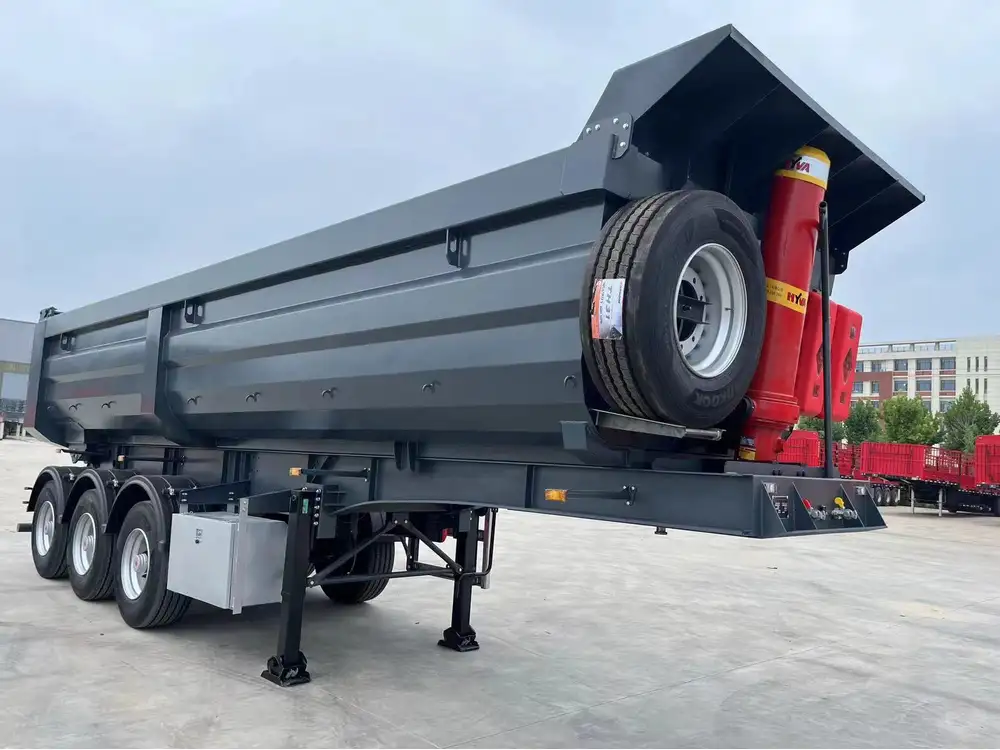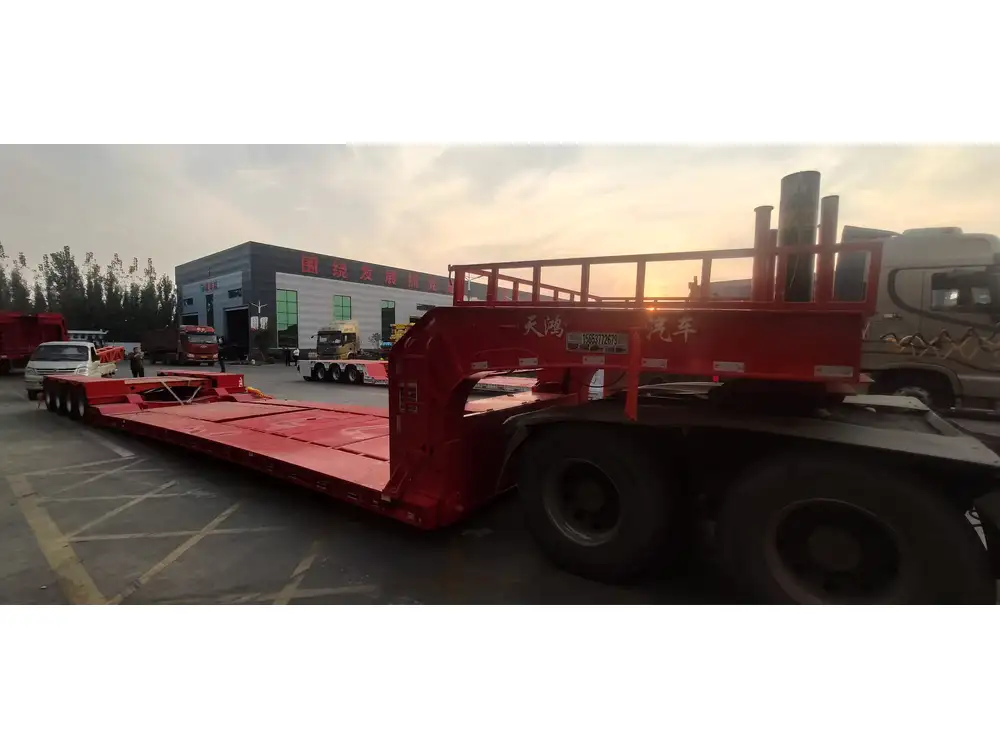Transporting cardboard bales efficiently is vital for both manufacturers and logistics providers. Understanding the dimensions and capacity of flatbed trailers is crucial to maximizing load efficiency and minimizing transport costs. This guide dissects the factors influencing how many cardboard bales can fit on a flatbed trailer, providing detailed insights and practical information.
Understanding Flatbed Trailer Dimensions
Flatbed trailers come in various sizes and configurations, yet the most common length is typically between 48 and 53 feet. The width generally measures 8.5 feet, while the height can range from 4 to 5 feet for the load. By knowing these specifications, we can better estimate how many cardboard bales can be loaded onto a flatbed.
Common Flatbed Trailer Sizes
| Trailer Type | Length (ft) | Width (ft) | Height (ft) | Max Weight Capacity (lbs) |
|---|---|---|---|---|
| Standard Flatbed | 48-53 | 8.5 | 4-5 | 48,000-52,000 |
| Step Deck Trailer | 48-53 | 8.5 | 10-11 | 48,000-52,000 |
| Lowboy Trailer | 48-53 | 8.5 | 10 | 40,000-45,000 |

Capacity Considerations
The maximum weight capacity of a trailer also plays a vital role in determining how many bales can be transported. The bales themselves have standard sizes, typically gauged by how much they compress. This variance heavily influences how many can fit on a singular flatbed.
Calculating Cardboard Bale Dimensions
Standard cardboard bales are generally structured in a few common sizes. The typical dimensions for a compressed cardboard bale are:
- Small Bale: 3 feet x 2 feet x 2 feet (approximately 70 lbs)
- Medium Bale: 4 feet x 2 feet x 2 feet (approximately 100 lbs)
- Large Bale: 5 feet x 3 feet x 3 feet (approximately 200 lbs)
By employing these sizes, we can now strategically calculate how many bales fit on a flatbed trailer.
Estimating Bale Volumes
To arrive at a more precise calculation, we’ll first compute the volume of each type of bale.
- Small Bale Volume: [ \text{Volume} = Length \times Width \times Height = 3 \times 2 \times 2 = 12 \text{ cubic feet} ]
- Medium Bale Volume: [ \text{Volume} = 4 \times 2 \times 2 = 16 \text{ cubic feet} ]
- Large Bale Volume: [ \text{Volume} = 5 \times 3 \times 3 = 45 \text{ cubic feet} ]

Flatbed Trailer Volume Calculation
A standard flatbed trailer with a length of 48 feet and a width of 8.5 feet maintains a volume of: [ \text{Trailer Volume} = 48 \times 8.5 \approx 408 \text{ cubic feet} ]
How Many Bales Fit on a Flatbed Trailer?
With the trailer dimensions and bale volumes calculated, we can now establish how many bales of different sizes can fit on a standard flatbed trailer.
Small Bales Calculation
To estimate how many small bales can fit:
[ \text{Number of Small Bales} = \frac{408}{12} \approx 34 ]
Medium Bales Calculation
For medium bales, the calculation is as follows:
[ \text{Number of Medium Bales} = \frac{408}{16} \approx 25 ]Large Bales Calculation
Finally, calculating the number of large bales gives us:
[ \text{Number of Large Bales} = \frac{408}{45} \approx 9 ]Weight Constraints and Loading Strategy

Weight Limits
While volume provides a theoretical maximum, actual loading is contingent on adhering to weight limits. As established, a standard flatbed trailer has a maximum weight capacity ranging from 48,000 – 52,000 lbs.
Weight of Bales
- Small Bales: 70 lbs each
- Medium Bales: 100 lbs each
- Large Bales: 200 lbs each
Now, we need to calculate how many bales each trailer can carry based on weight.
Weight Calculation for Each Bale
Small Bales: [ \text{Max Small Bales} = \frac{52,000}{70} \approx 742 ]
Medium Bales: [ \text{Max Medium Bales} = \frac{52,000}{100} \approx 520 ]
Large Bales: [ \text{Max Large Bales} = \frac{52,000}{200} \approx 260 ]

Final Capacity Assessments
When examining both volume and weight, we find that:
- Small Bales: 34 based on volume; weight not restrictive.
- Medium Bales: 25 based on volume; weight not restrictive.
- Large Bales: 9 based on volume; weight not restrictive.
The limiting factor in our calculations is the bale size. When loading the trailers, the type of bale drastically influences final capacity based on dimensional occupancy and cumulative weight.
Optimizing Trailer Loading
Loading Arrangements
The layout plays a crucial role in maximizing trailer space. Bales can be loaded in various configurations, influencing how snugly they rest against one another.
Horizontal Stacking: Best for flatbed trailers.
- Allows multiple bales across the width.
- Bales can be layered vertically to conserve height.
Vertical Stacking: Less common but can be utilized if bales are secured securely.
- Reduces risk but must factor stability in transport.

Tie-downs and Safety Regulations
Each load must adhere to the safety regulations addressing proper securement techniques when transporting cardboard bales. Proper ratchet straps and securing mechanisms mitigate shifting during transport.
Load Securement Guidelines
- Use sufficient tie-downs based on weight and number of bales.
- Ensure a tight fit to prevent shifting.
- Always adhere to DOT guidelines for load securement.
Conclusion
Determining how many cardboard bales can fit on a flatbed trailer is not merely a mathematical exercise; it encompasses understanding the balance between volume and weight constraints while considering practical loading strategies. By implementing the insights from this guide, stakeholders in the cardboard manufacturing and logistics sectors can optimize their transport efficiencies, thereby reducing costs and enhancing operational efficacy.
For manufacturers and transport providers, mastering these calculations and strategies translates into significant competitive advantages in a fast-paced market. Ultimately, maximizing trailer capacity ensures streamlined operations, cost-effective logistics, and a more sustainable transportation model in handling recyclable materials like cardboard.



